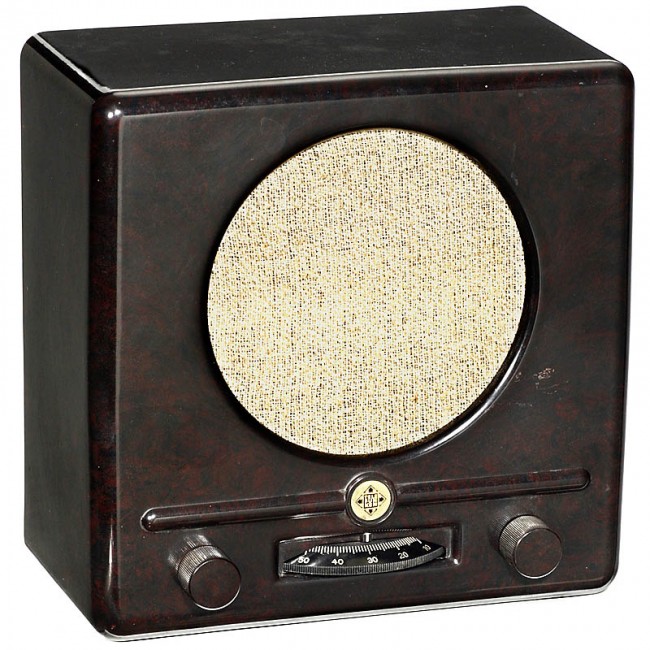While I have learned about Hitler’s rise to power in school, I did not know how instrumental German radio seemed to be in the Third Reich’s reign. They seem somewhat primitive now, but in the 1920’s and 1930’s, radios were considered a luxury item, and often far too expensive for the average German (one example Moorhouse gives says a radio was about two weeks worth of wages). Under Hitler, new models were produced at reduced prices, making radios available for a far wider audience. One was the portable DKE radio, which ran on batteries and made it possible to listen to broadcasts outside, or even in the countryside.

Of course, like many newer technological developments during this time, Hitler and Goebbels utilized the radio for their own agenda. Propaganda messages were interspersed throughout transmissions of music, sports, and other forms of entertainment (so the German people would not be so bombarded with propaganda that they tuned out, but bombarded just enough that they still had to hear it). Broadcasts were even planned during working hours, so as to ensure the greatest number of citizens were gathered together to listen. As I’ve noted in my previous posts, it seems that the Third Reich was extremely good at expediting their ideology, so much so that they made readily available machines that could literally place propaganda in the home. Again, the Nazi Party seemed to do little without purpose.

As a cinephile, I am extremely interested in how motion pictures were used as propaganda and to disseminate ideas. Anna mentioned how new technological advancements, as the popularization of the radio, were used to support the Nazi regime and advancement. The cinema was used in a similar manner. Triumph of the Will chronicles the 1934 Nazi Party Congress in Nuremberg (the city we are first headed to). It premiered on 28 March 1935 in Berlin and was an instant success; it earned 815,000 Reichsmark in its first two months becoming one of the three most profitable films of that year. It was rewarded with the German Film Prize (Deutscher Filmpreis), a gold medal at the 1935 Venice Biennale, and the Grand Prix at the 1937 World Exhibition in Paris – what highlights the international acclaim and scope this movie reached.
This use of the entertainment industry to divulge the Nazi ideology is portrayed (with some artistic freedom) in Tarantino’s movie Inglorious Bastards as in the scene depicted bellow:
https://www.youtube.com/watch?v=p2VUGfrZyck
Yes! You’re exactly correct. I can recall researching on Triumph of the Will during high school, and the lengths that director Leni Reifenstahl went to in order to deny the propaganda message in her film are astounding. For the film itself, a specific camera rig was designed so that Hitler could be filmed from below and framed in a way that made him appear powerful and god-like. In the same vein, the beginning of the film even features a sequence of Hitler arriving in Nuremberg in a plane that descends from the clouds. This directly follows the movie’s opening titles, which features a mention of Germany’s failure during and after the First World War. Film analysts have determined that this sequence is clearly intended to be symbolic for Hitler being a “savior” to the German people after their defeat in 1918. And I’m glad that you brought up the film, as it is such a perfect example of the Third Reich inserting propaganda into “normal” media, just as they did with the radio.
I’m also happy you mentioned Stolz Der Nation/Inglourious Basterds! Along with being one of my favorite films, it is another useful example of how Germany’s war heroes and soldiers were exploited for propaganda purposes. If you recall, Moorhouse mentioned in one chapter how portraits, stamps, and postcards were often made using the images of these war heroes, not dissimilar to the war the young German soldier was used for this film.